Between the years 2018-2021, I was slutty for BAGGU. Ask my friends, I made them all BAGGU converts. (How many of you own those fanny packs now?) The brand aligned with my sense of self. Colorful, affordable, and sustainable. The products are well made and are made to last.
In 2022 I interviewed for a design job there and didn’t make the cut. They say don’t meet your idols. I am happy this put me on a different path, but the BAGGU glimmer faded. I moved on to used nylon Kate Spade from the 90s and sold most of my BAGGUs on Poshmark.
The girls went crazy for my BAGGUS. I sold every single one for retail price. I sold this dirty-ass yellow fanny pack for the price I paid for it... Every piece sold within the first 10-15 minutes of posting it. Girls were messaging me asking me if I was selling more so they could put an alert on their phones. What was this cultural phenomenon I was leaving behind?
Something I loved about BAGGU (an SF-based company) was the collaborations with the Bay Area art scene. To me, it felt like they were inspired by who I was inspired by. They were into what I was into. This fed my brand loyalty.
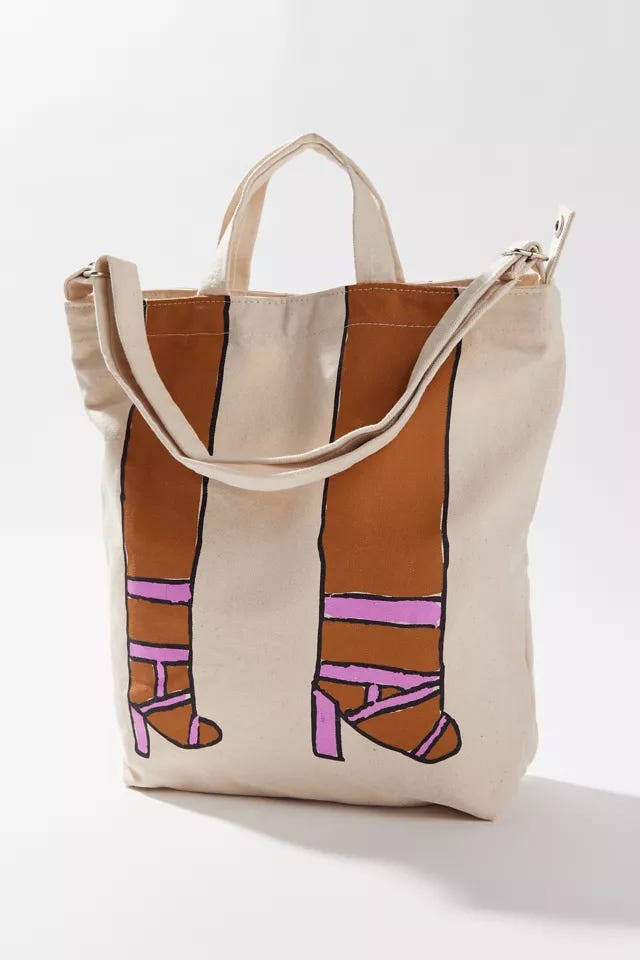
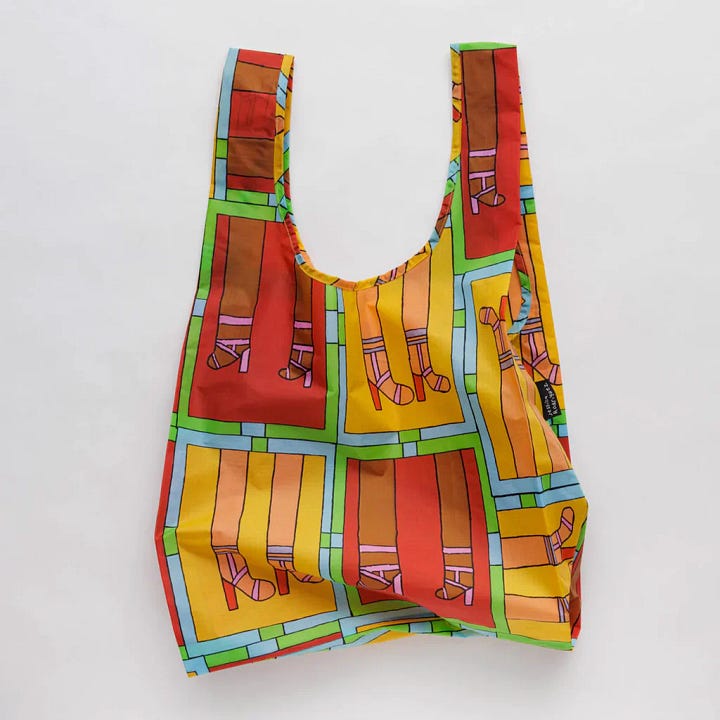
Creative Growth Art Center is a non-profit organization based in Oakland, California. They provide studio environment and gallery representation for artists with developmental disabilities. One of my favorite platforms, Art21 has a few mini-docs about them here.
Rewina Beshue is a Bay Area artist whose psychedelic illustrations are something to be captivated by. I am inspired by how she has found her style and although her skills and mediums have developed throughout the years, her style remains authentically her.
BAGGU has also collaborated with artists Like Jessica Williams, Joonbug, Liz Hernández, and more.
There’s something that really hits about a successful brand collaborating directly with its community. As someone who cares about supporting local artists, it read to me that they authentically and naturally had their finger on the pulse. It’s a cool and unique way to use your power for good.
Although it’s been years since I rode the BAGGU wave, I made sure to witness their collaborations from the sidelines. in 2023, I gifted my mom a few pieces from their Laura Ashley collab (a great way to get Millenials to spend money for their moms). When they started collaborating with fashion brands like Sandy Liang, I realized that there might be a shift in their target demographics. (I was late to the bow trend, but I respect the bow trend.) I understand the market strategy of appealing to younger generations. I am okay with that, though it can feel like we are getting left behind or “not cool”. (More on this in a future letter.) With younger generations, sometimes the nuances are unrealized.
A few days ago the Collina Strada x BAGGU collaboration was released. From my millennial POV, I view Collina Strada as an asymmetrical, soft, warped, grunde, feminine Gen Z dreamscape. It’s a cool brand. I am by no means a Gen Z expert, but I do know they value the underdog, don’t dress for the male gaze, and read the news.
Collina Strada’s mission states:
“COLLINA STRADA IS A PLATFORM FOR CLIMATE AWARENESS, SOCIAL AWARENESS, CHANGE AND SELF EXPRESSION.
SUSTAINABILITY IS A JOURNEY.”
They are also very transparent about their use of AI-generated patterns for their clothing. But what does sustainability actually mean?
If you’ve been paying attention to the news, there are countless articles about AI’s impact on the environment. In sum, AI applications increase energy consumption, training AI programs have a huge carbon footprint, and tech companies aren’t very transparent about this. Not to mention, you are now seeing AI everywhere, even when it’s not by choice (like on Google).
So needless to say, the BAGGirles are going hard in the comment section.
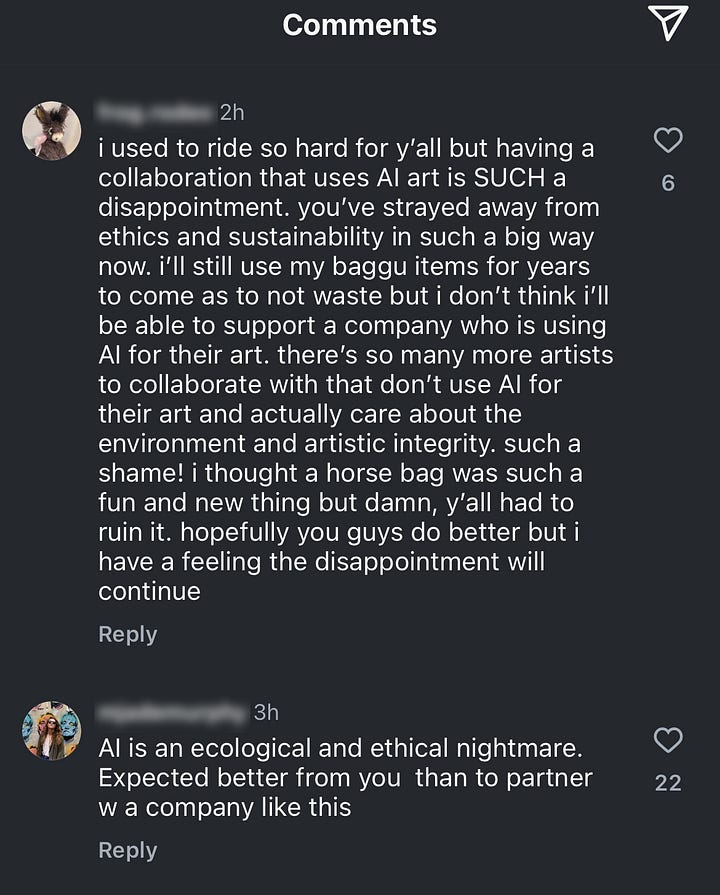
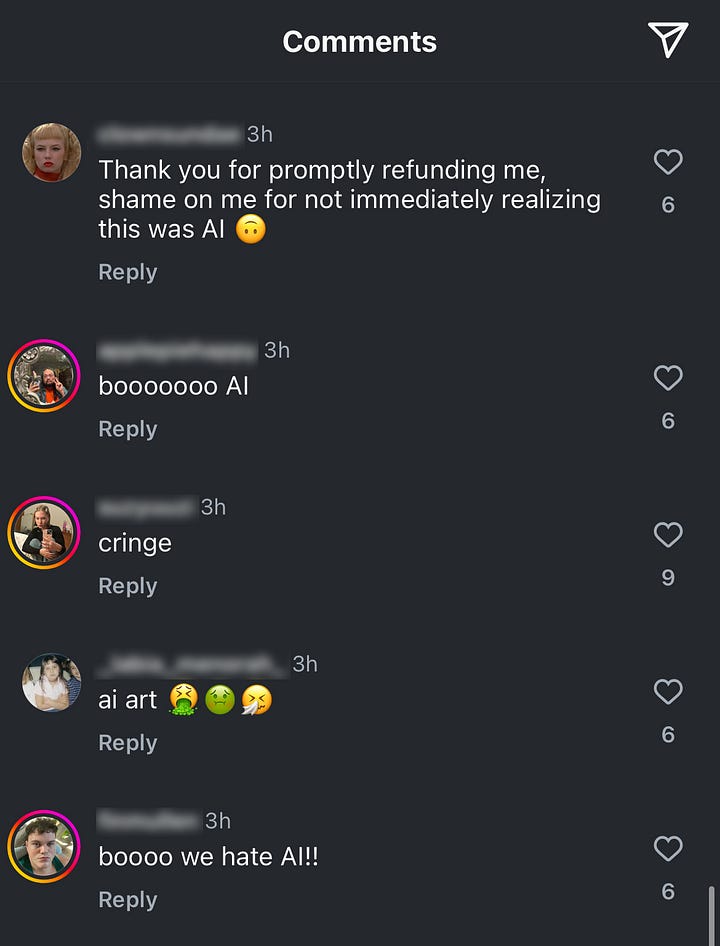
BAGGU used deadstock Collina prints for their collab. So no new patterns were made using AI. (Does that matter? I don’t know.) A common misconception about AI is that it ruins creativity and steals art from artists. Maybe in some ways, it does. But a lot of technical and creative skill still has to be involved for AI to be successful. My controversial art historical perspective is that all ideas are stolen ideas anyway. Inspiration has to come from somewhere. And maybe this is all part of the sustainability journey.
What’s my takeaway? This is a reminder that brands should consistently involve their target audience when they design products for them. It’s essential to remember their values with every single thing they do. Otherwise, it might cost them brand loyalty. What might seem like a cool idea to the team, might alienate your audience. And if your values of innovation and sustainability conflict, which one takes precedence? Research and intentional thinking are a huge part of a successful creative strategy. I am curious to see what happens next.
And in regards to AI, when you are creating something and you have the option to opt out of it, maybe you should. Creative Growth Art Center and Collina Strada collabs are feeling very different right now.
And now I will stop using Mindjourney for fun. The more you know.
❤️ Lizzy
This is a hot topic. I would love to hear your thoughts, research, and knowledge in the comment section!




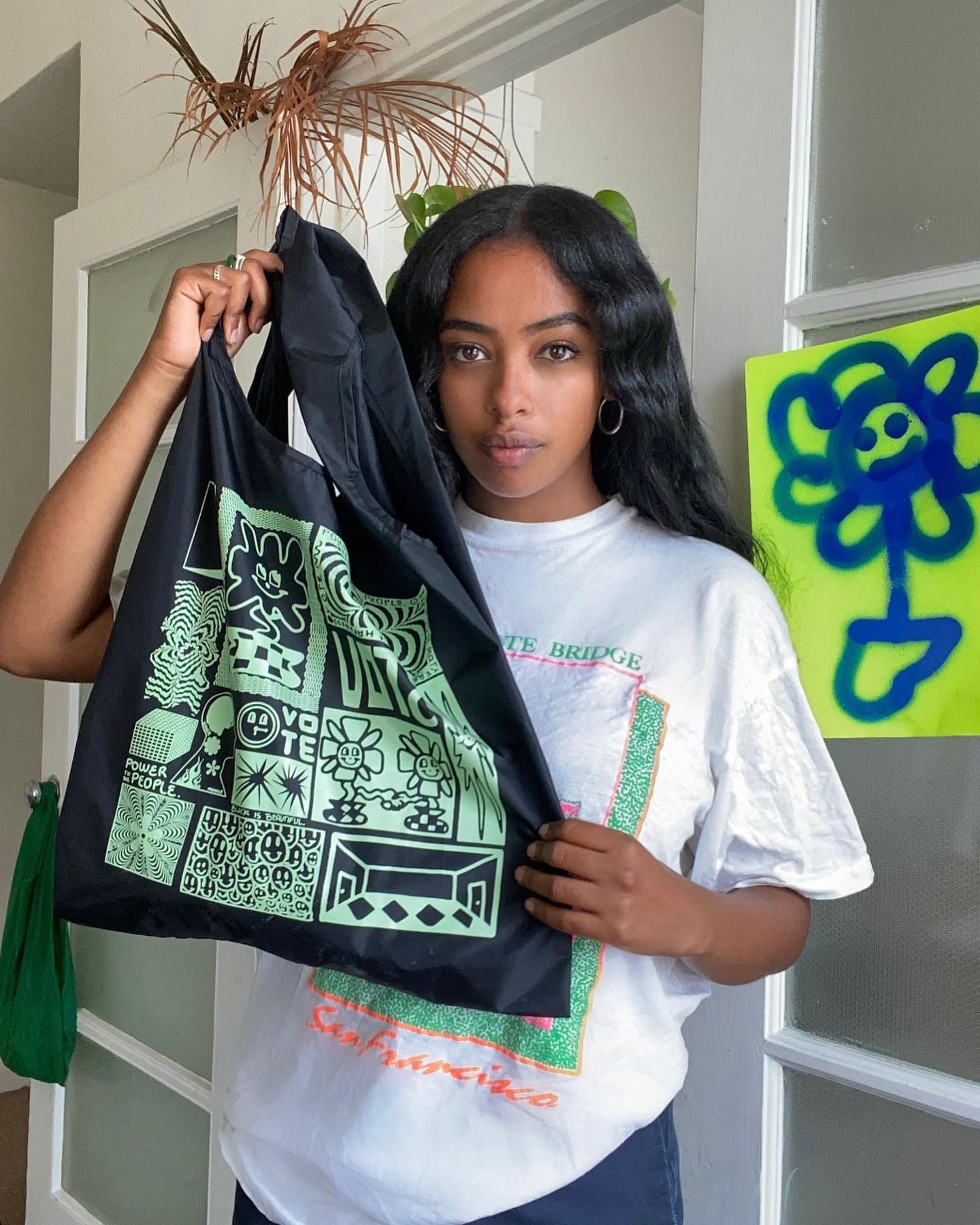
Well, now we want to see the Kate Spade collection you got going! Love hearing your views and seeing the unique connections you make, as always! There hasn't been enough talk about the resources used to make AI as functional as it is nowadays. I will definitely being using it more sparingly. But!!! sometimes my dreams are so cool I just have to enter them into an image generator to see what kind of art it comes up with! lol -Kt